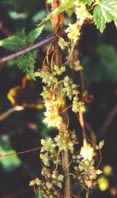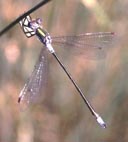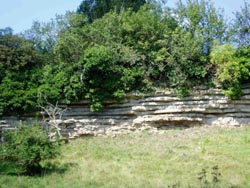|
|
 Hanham AreaWildlife At Conham, regenerated woodland, with other varied habitats now make up the Avon Valley Woodland Local Nature Reserve – a haven for wildlife. For more information, download the Avon Valley Woodland Local Nature Reserve leaflet. At Conham, regenerated woodland, with other varied habitats now make up the Avon Valley Woodland Local Nature Reserve – a haven for wildlife. For more information, download the Avon Valley Woodland Local Nature Reserve leaflet.
Trees have reclaimed the quarried rock faces that scarred the steep slopes of the Gorge from Conham to Hanham. The trees also conceal the spoil left by several centuries of copper and brass making activity.
- Look out for woodpeckers, kingfishers and herons.
- Along the stretch of river between Conham and Hanham, and again at Saltford, the bankside greater dodder (above right) can be found.
- The greatest concentration of the nationally rare Bath asparagus is prevalent here.
- Daubenton's bat is most likely to be seen along tree-lined sections and sheltered reaches of the river where water flow is least turbulent. This allows a clearer surface against which to pick up midges.
- The Emerald Damselfly (above left) and Brown Hawker dragonfly can be seen in this area.
Geology
 Upstream of Bristol, the Avon Valley narrows as the river cuts through the Hanham Gorge, as this cross-section shows. Here there are quarries which worked the steeply tilted hard Pennant Sandstone formed about 300 million years ago (Carboniferous age). The original sand was brought by rivers flowing through the rain forests of the time. Upstream of Bristol, the Avon Valley narrows as the river cuts through the Hanham Gorge, as this cross-section shows. Here there are quarries which worked the steeply tilted hard Pennant Sandstone formed about 300 million years ago (Carboniferous age). The original sand was brought by rivers flowing through the rain forests of the time.
Pennant Sandstone from Hanham could often be split into thin slabs so was ideal for paving stones, kerbs, grave stones and even for roofing slates. It was often used locally and was also carried by river and canal to be used in Wiltshire and Berkshire. Bath Stone was famously used almost exclusively for the buildings in Bath, but Pennant was chosen for the Georgian pavements and steps in the city.
  Beyond the Hanham Gorge the river again flows through a wider valley where softer rocks have been more easily eroded. Thin layers of mudstone and limestone, formed about 200 million years ago (Jurassic age), can be seen around Keynsham and Saltford (left). These Lias rocks are famous for their fossil shellfish and ammonites which must have lived in a shallow muddy sea. However legend has it that the ammonites are the remains of snakes which St. Keyne turned to stone. Beyond the Hanham Gorge the river again flows through a wider valley where softer rocks have been more easily eroded. Thin layers of mudstone and limestone, formed about 200 million years ago (Jurassic age), can be seen around Keynsham and Saltford (left). These Lias rocks are famous for their fossil shellfish and ammonites which must have lived in a shallow muddy sea. However legend has it that the ammonites are the remains of snakes which St. Keyne turned to stone.
|
|


